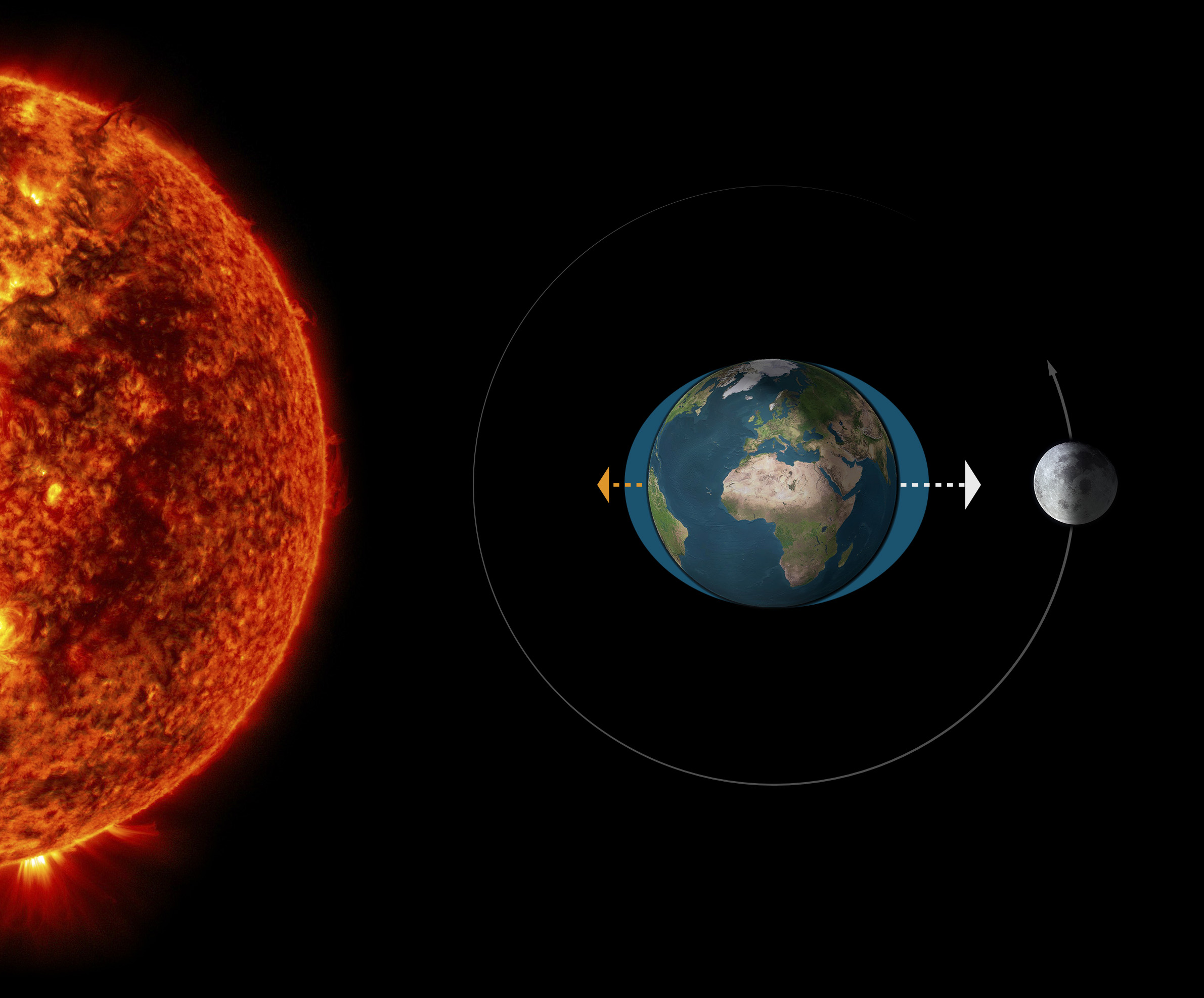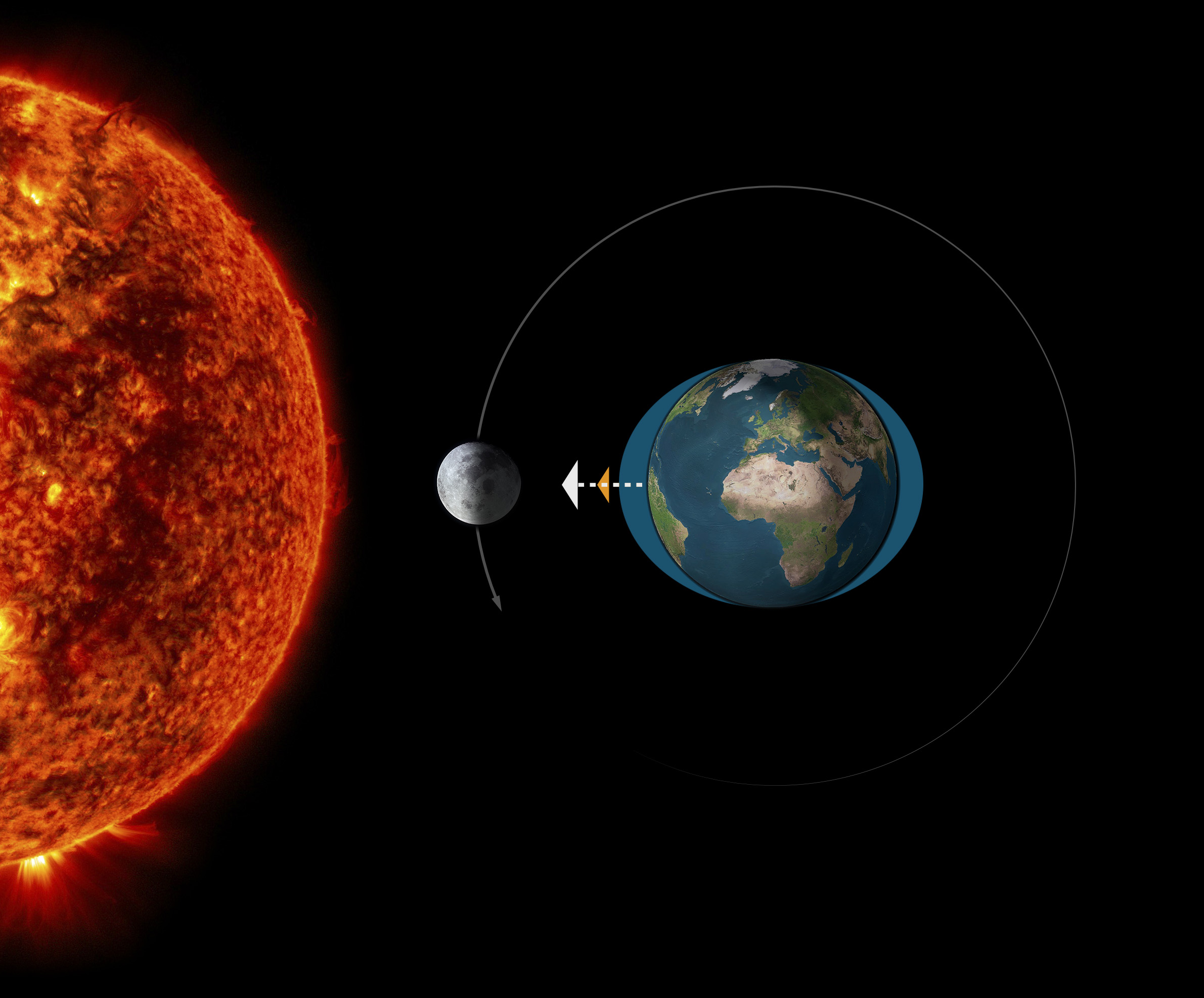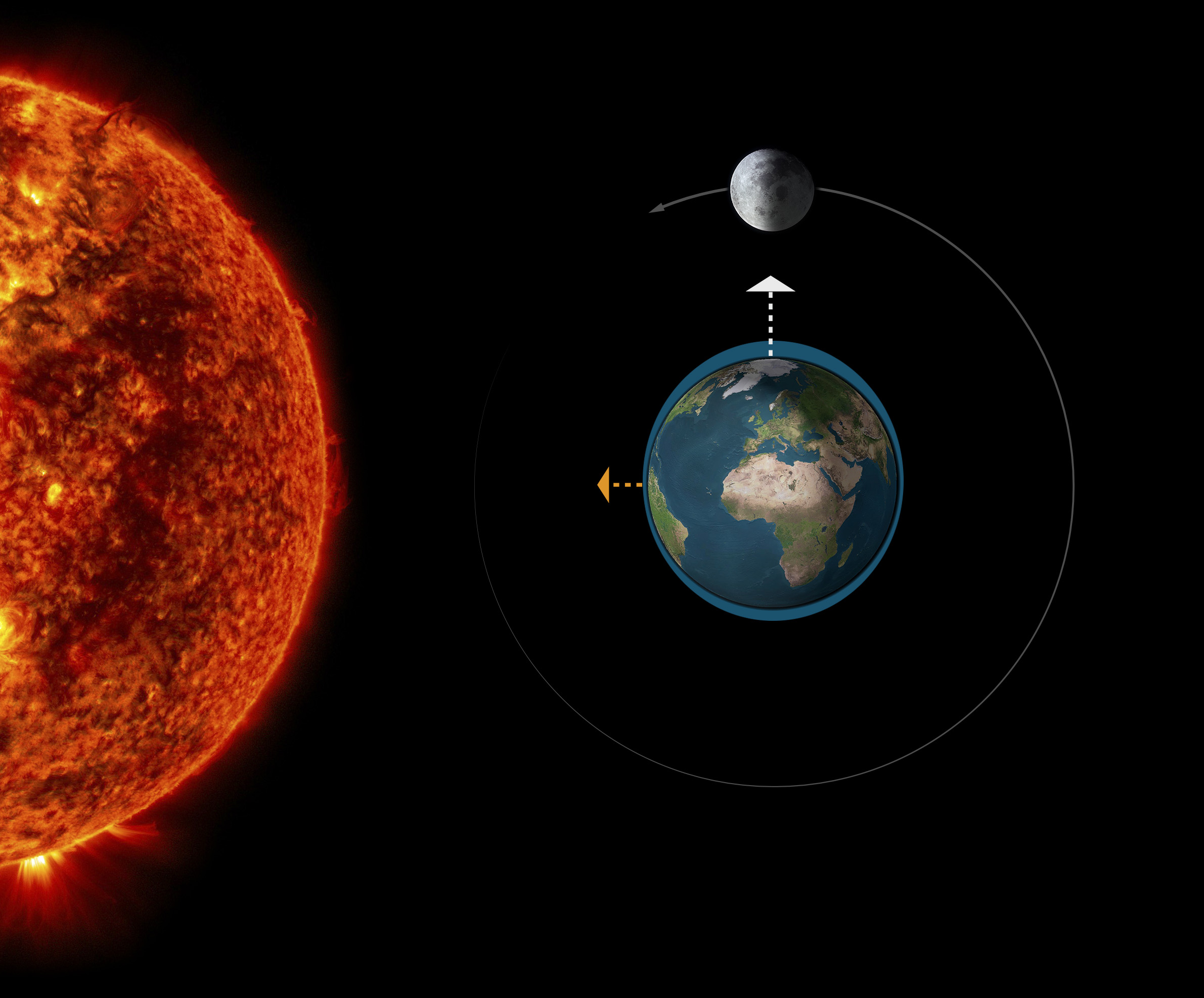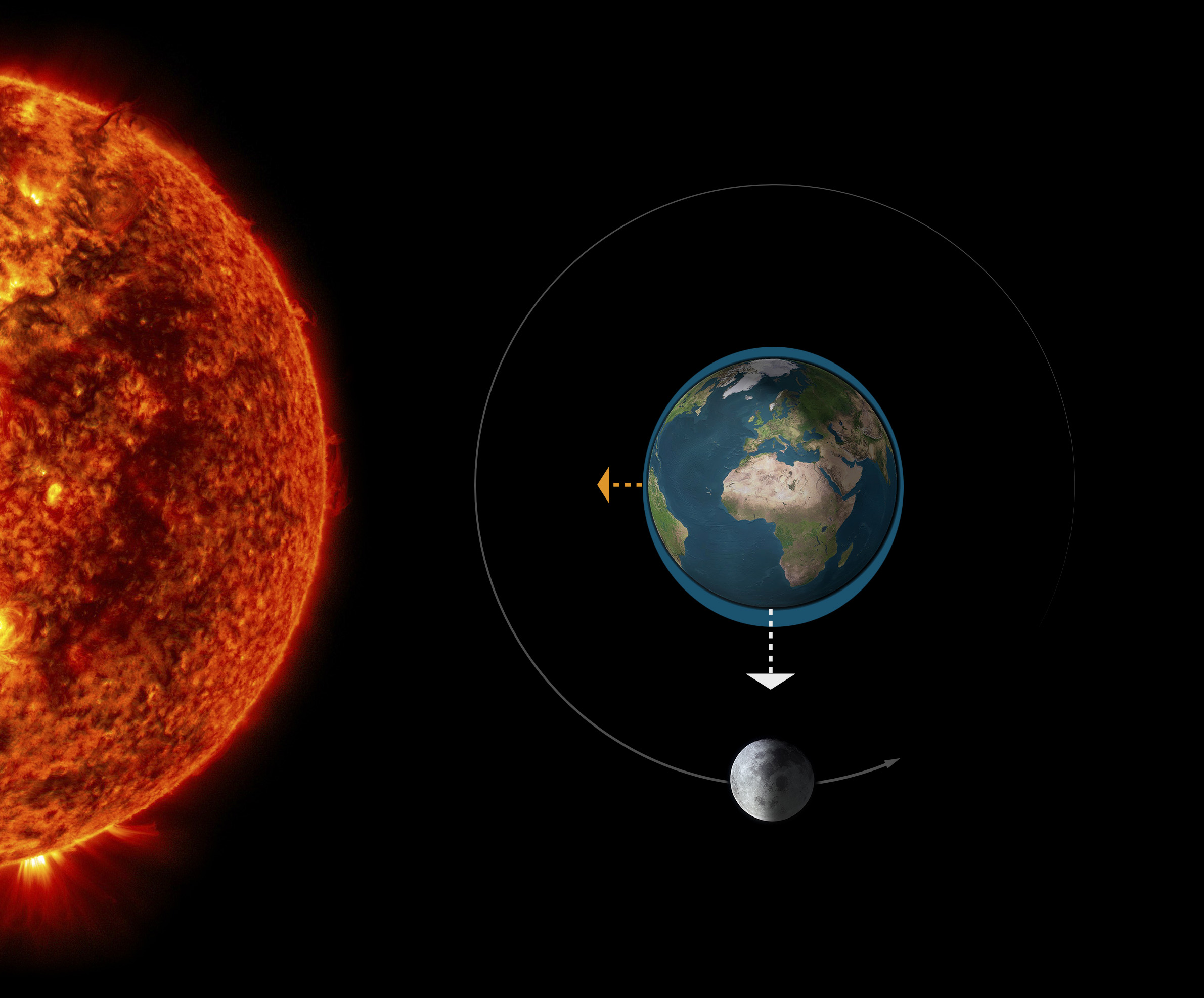
We will use two classifications to define the tide types. The first of them is the value awarded to the height of the tide and is the one reflected in the tide tables. The second is the lunar phase and is directly related to the average activity of fish in the solunar charts.
According to the height of the tide
Normally there are two high tides and two low tides for every lunar day as, at the same time as the Moon lifts the water over the Earth on the side facing it, it also separates the Earth from the water on the opposite side.
The result is that the water lifts over the terrestrial surface on the two diametrically opposite sides of the planet.
According to the lunar phase
In accordance with the lunar phase, we can distinguish two types of tides:
During the full moon and new moon phases, the Moon and the Sun are aligned and their effects combined, producing the spring tides. On the tide tables we can see the high tidal coefficient of the tides when both celestial bodies are aligned.
There is a proven increase in the activity of fish during spring tides, above all if these coincide with sunrise or sunset, and these are the most propitious days for fishing.
 Full Moon (spring tides)
Full Moon (spring tides)
 New Moon (spring tides)
New Moon (spring tides)
During waxing and waning moons, on the contrary, the effects are detracted, thereby obtaining tides of less amplitude (lower tidal coefficient), called neap tides.
The movement on the seabed tends to be less and this normally results in days that are less propitious for fishing than days with spring tides.
 Last quarter (neap tides)
Last quarter (neap tides)
 First quarter (neap tides)
First quarter (neap tides)